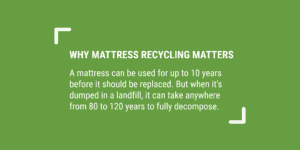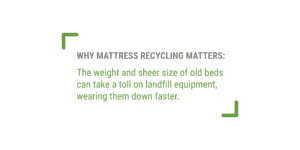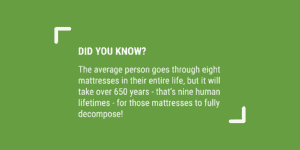Community Feature: Northwest Canadian Greyhound League
When someone mentions a Greyhound, what often comes to mind is the image of a lean, long-legged dog with a slender face. But when pressed further, what else do you know about the breed?
 What do you know about Greyhounds? (Image Credit: NCGL)
What do you know about Greyhounds? (Image Credit: NCGL)
When we sat down with NCGL, we learned that:
- As sighthounds, Greyhounds were bred for hunting deer and hare
- Nowadays, Greyhounds have found a livelihood on the racefield
- Greyhounds are in fact great apartment dogs
- And, their gentle and lovable nature make them fantastic family pets
What are sighthounds?
A unique breed of dogs, Greyhounds boast sharp eyesight and speed capable of hunting agile prey. Other sighthounds include whippets, salukis, and afghan greyhounds. Compared to scent-hounds, these sighthounds – as their name suggests – excel at hunting by sight rather than by scent.
 Greyhounds excel at hunting by sight. (Image Credit: NCGL)
Greyhounds excel at hunting by sight. (Image Credit: NCGL)
Whereas a beagle may sniff out game hidden in brush with their powerful nose, Greyhounds would use their excellent eyesight to spot deer and hare, and chase after them. Where a Greyhound would lack in endurance during a chase, they excel with bursts of speed.
Greyhounds on the Racefield
The ability of these Greyhounds to sprint make them the ideal racing dogs. As such, many bets have been made on the racefield for these Greyhounds. In fact, Greyhounds often find themselves in the racing career, trained to compete against each other under the caring guidance of their handlers. With their natural ability to reach 72 km / hr during sprints, Greyhounds have long thrived on the track.

Greyhounds have the natural ability to reach top speeds for racing. (Image Credit: Canadian Mattress Recycling)
But did you know that Greyhounds are also fantastic apartment dogs?
Greyhounds As Apartment Companions
To those unfamiliar with the Greyhound breed, recommending the breed to apartment dwellers may seem odd. Greyhounds love to sprint, to race. So isn’t an apartment the last place they’d feel comfortable living in?
On the contrary, as we learned from NCGL, Greyhounds find contentment lounging at home, sprawled on a couch. When we met Judy Miller, NCGL’s Treasurer/Director, her own Greyhound was curled up under her office desk, dozing off in a light nap!
Greyhounds require only a couple of short walks each day. They like to sleep a lot during the day, making them a very low maintenance companion compared to other breeds. In addition, Greyhounds rarely bark, and are great with other people and animals.
Greyhounds As Family Pets
Some dog breeds are infamous for nipping at outstretched fingers. This is a problem when you have infants or toddlers, who love to grab things. But the sweet, gentle nature of Greyhounds make them the perfect addition to a new family. Their calm temperament would be a wonderful contrast to a new family’s busy life.

The Greyhounds’ sweet and gentle nature make them perfect companions. (Image Credit: Canadian Mattress Recycling)
The key takeaway is to teach children not to bother a Greyhound’s nap – or to surprise a Greyhound with sudden movement if they’re lying down or sleeping. These general pointers apply to other breeds, though, and aren’t Greyhound exclusive.
Overall, Greyhounds make fantastic family pets. Even though they’re a larger dog breed, and can seem intimidating around children compared to smaller dogs, the Greyhounds’ sweet and gentle nature can make them perfect companions.
Adopting a Greyhound
In Vancouver, the Greyhound community is filled with passionate owners and advocates willing to lend a hand if you decide to adopt a Greyhound. For example, when we spoke with NCGL and attended their fundraising gala, it was clear that the owners all had the breed’s best intention in mind. Many of them attend local activities and meet-ups, with most of them Greyhound-friendly!
 The Greyhound community is filled with passionate owners willing to lend a hand with your own adopted Greyhound. (Image credit: NCGL)
The Greyhound community is filled with passionate owners willing to lend a hand with your own adopted Greyhound. (Image credit: NCGL)
Sometimes people feel adopting a dog may be stressful, or scary, seeing as they may not have the experience re-training them or helping them transition into their new home. However, with the presence of NCGL and its members, you know someone is always there to help if you ever need it.
Why Adopt?
One of the biggest draws of adopting a Greyhound is that as ex-racing dogs, they’re already house-trained. Of course, there will always be an adjustment period for the dog to get adjusted to its new home in your house, but often these dogs are well trained and extremely well mannered.
Some of the other Greyhounds NCGL rehomes may require more training, such as puppies. For example, earlier in 2019, a litter of pups were rehomed from Northern Alberta along with 15 other adult dogs including the mom of the puppies.

Puppies will need more training compared to adult dogs. (Image Credit: NCGL)
Because these pups haven’t been trained as racing dogs, the new owner must be dedicated to training them from a blank slate, just like a puppy from any other breed. Even so, as we’ve found, the community at NCGL is always eager eager to share tips for training and taking care of a Greyhound!
How to Adopt a Greyhound
If you’re located in Western Canada – you’re in luck!
Northwest Canadian Greyhound League (NCGL) oversees the fostering and adoption of retired racing Greyhounds in Northwest Canada. For the last twenty years, NCGL has placed many retired racing Greyhounds in their new, permanent homes.
 Vancouverites can adopt a Greyhound through NCGL. (Image credit: NCGL).
Vancouverites can adopt a Greyhound through NCGL. (Image credit: NCGL).
Advocating on behalf of these gentle dogs, NCGL established a network with Greyhound adoption organizations in the states. Thus, NCGL works across borders to ensure the Greyhounds in their care receive the best quality of life after their racing days. Their chapters spans British Columbia, Alberta, Saskatchewan and Washington State.
Visit their website to learn more about the organization, the breed, and the adoption process. To see the Greyhounds available for adoption, go here. If you have questions about the adoption process, email Ms. Judy Miller at treasurer@ncgl.ca.
Final Words
As more Canadians choose to adopt a dog these days, it is important to make sure the breed you adopt suits the lifestyle you live. For apartment dwellers, many would start looking for a smaller dog. However, as we learned, Greyhounds suit the apartment lifestyle despite their size. Their easy going temperament, need for a few short walks a day, and penchant to curl up on your couch to sleep the day away, make them a fantastic companion.
Canadian Mattress Recycling Inc. is pleased to feature Northwest Canadian Greyhound League in its first quarterly charity feature. At our company, we firmly believe in supporting organizations seeking to improve the environment, animals, and communities around us. We are also grateful to have attended the NCGL’s For the Love of Dogs fundraiser gala early in the year, learning about the amazing work the organization does for the Greyhound breed.




